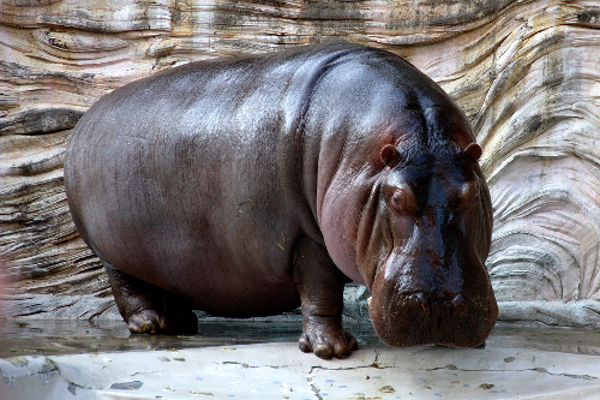Nearly 5.9 million to 9,000 years ago, India was home to the hippopotamus. These entered Eurasia from Africa, then diversified in South Asia before going extinct.
Now, studying a small fragmented tooth unearthed in Madhya Pradesh, an international team of researchers has discovered the last known specimen of the Hippo Hexaprotodon species. However, this does not mean that it is the last one to have lived in India.
This fossil was unearthed in 2003 by Rajeev Patnaik (Panjab University) and Parth R. Chauhan (IISER Mohali) who spent days studying the fossiliferous silt near the river Narmada. “We believed that the species was older than 50,000 years and did not study it fully. Recently, I analysed the date using accelerator mass spectroscopy (AMS) in Taiwan. It revealed that the specimen was quite young and could possibly be among the last ones that lived in India,” Dr. Patnaik says. Accelerator mass spectroscopy does not require a large sample and it also has a higher precision than traditional radiocarbon dating.
Human-led extinction?
The paper published in Quaternary International also discusses the possible causes of the extinction. The researchers hypothesise that a “combination of climatic stress and anthropogenic impacts” could have led to their extinction.
Dating studies show that this hippo lived during a “particularly dry period in the late Quaternary” period (15,000-16,000 years ago). Severe drought in South Asia and weak Indian monsoons might have led to the extinction.
Researchers note that hunting, habitat alteration, ecological human encroachment were the reasons for species extinctions during this period in other parts of the world. While Hexaprotodon and Homo sapiens co-existed for several thousand years, researchers did not find any kill sites, but they note that this reason cannot be ruled out.
Direct dating
This is the only directly dated Hexaprotodon from the Indian subcontinent, the report states. “A direct date means that the fossil bone of the animal was used to determine the date. Usually, charcoal or shells found alongside the fossil are studied and this known as an indirect or associated date,” explains Advait M. Jukar, the paper’s lead author, in an email to The Hindu. He is from the Department of Paleobiology, National Museum of Natural History, Smithsonian Institution.
He explains that carbon isotope analysis showed that the animal had a C4 dominated diet. “It refers to the kinds of plants the animal was eating. The plants leave a specific isotopic signature in the teeth of animals that eat them… basically, these hippos were eating grasses, and grasses prefer dry, seasonal climates.”
The report concludes that ancient DNA could provide insights into the causes of the extinction. When asked if fossils hold DNA, Advait explained, “DNA does degenerate as soon as the animal dies, but fragments remain, and in some cases, have been isolated from fossils that are a few hundred thousand years old. This Hexaprotodon specimen isn’t very old, so it may be possible to extract DNA fragments.”
Source: The Hindu
Image Courtesy: Wikimedia
You may also like
-
New Heat-Based Approach To Cancer Treatment Can Reduce Chemotherapy Doses
-
Scientists Take A Major Step Towards Unification Of Classical & Quantum Gravity
-
India Graphene Engineering and Innovation Centre (IGEIC) Under the Vision of Viksit Bharat@2047 Launched
-
New High-Performance Gas Sensor can Monitor Low Level Nitrogen Oxides Pollution
-
Antidepressant Drug can be Repurposed for Treating Breast Cancer
